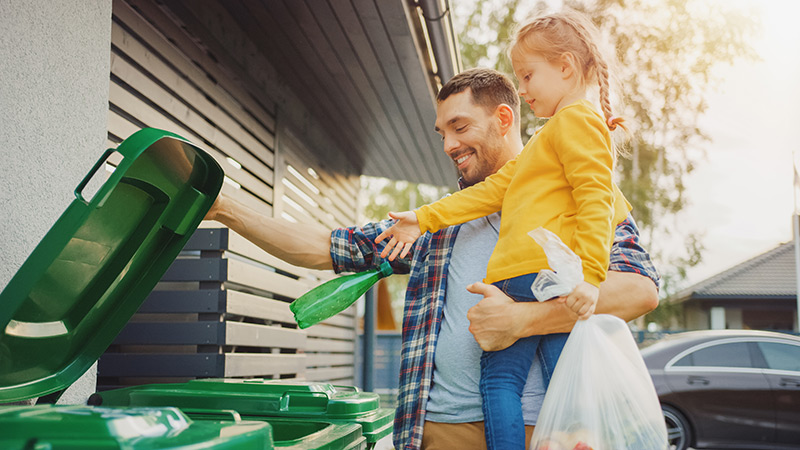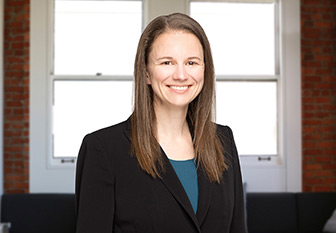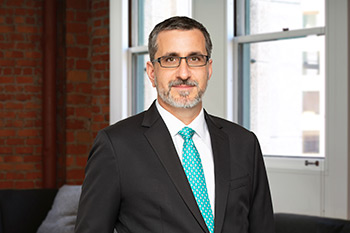California leads the nation on plastics reduction and recyclability regulations, and two new laws propose regulatory and litigation risks.
California is a leader on plastics reduction, passing legislation regulating recyclability and sustainability claims, promoting the use of recycled materials, and preventing plastics pollution. In particular, two new laws require manufacturers to carefully evaluate their current product materials and labeling, both to ensure compliance with stringent regulations and to mitigate litigation risks arising from enforcement by both the state and the private plaintiffs’ bar.
In 2021, California passed SB 343, which prohibits as deceptive or misleading any products or packaging that display:
unless it meets a two part test: (1) the product or packaging is considered recyclable in California, and (2) is of a material type and form that routinely becomes feedstock used in the production of new products or packaging.
Unlike prior California sustainability legislation, compliance with the Federal Trade Commission’s Green Guide is not a liability “safe harbor,” although there are narrow exceptions for beverage containers with redemption value, products with resin identification in a solid triangle, and certain products otherwise in compliance with specific laws.
What does “considered recyclable” mean? CalRecycle will be completing a study to determine what materials collected by solid waste facilities within the state fall within SB 343’s aggressive, numbers-based targets for what is “considered recyclable.” The study will evaluate whether material is collected by recycling programs covering at least 60% of both the state’s population and its recycling facilities, and whether at least 75% of the product/packaging sorted and aggregated in the state is reprocessed into new products or packaging. Additional requirements apply for material collected outside traditional curbside programs. Given these high targets, manufacturers should expect that a large number of materials previously identified as recyclable will not actually be “considered recyclable” under SB 343, and product packaging and labeling will need to be modified.
What does “routinely becomes feedstock” mean? This term is not defined in SB 343. CalRecycle held public workshops during Summer 2022 to discuss draft regulations. However, the focus was on improving CalRecycle’s collection of data, not on defining what materials “routinely become feedstock,” The scope of this concept will likely be determined via litigation attempting to enforce SB 343.
CalRecycle is anticipated to issue its SB 343 regulations by Fall 2023, for public notice and comment prior to adoption by January 1, 2024, after which manufacturers will have 18 months to come into compliance. Importantly, CalRecycle has stated that it will not issue any guidance on what symbols or language can be used on packaging or products that do not meet SB 343’s recyclability test. This standard will also be defined via litigation.
SB 343’s prohibition on the use of chasing arrows in many circumstances will create a dilemma for manufacturers with nationwide distribution, because 31 states have laws explicitly requiring that resin codes be identified within the chasing arrows. To minimize litigation risks, manufacturers should further evaluate the logistics required to direct distribution of product packaging to different geographic markets based on states’ divergent regulations.

In 2022, California adopted the “extended producer responsibility model” with SB 54, which makes manufacturers of single-use plastic products and packaging responsible for that product’s ultimate disposal. Manufacturers, retailers, or wholesalers of single-use packaging and food serviceware (including plastic-coated paper or paperboard, paper or paperboard with plastic intentionally added during manufacturing, and other single-use plastic serviceware) are required to ensure that all such packaging be at least 30% recycled, reused or composted by 2028, 40% by 2030, and 65% by 2032. Much of this reduction will likely be accomplished by shrinking the size of packaging or via use of alternative materials. Indeed, SB 54 requires manufacturers to reduce by 25% the weight and plastic component source for covered materials sold, offered for sale, or distributed in California.
Producers of covered materials will further be required to create and financially contribute to “producer responsibility organizations” (PROs) that must develop a plan for expanding public and private recycling infrastructure to achieve the required source reductions. Once these plans are approved by CalRecycle, the PROs must register each plastic producer member and reimburse local governments for any implementation costs. By promoting inclusion of covered material in collection and recycling programs, SB 54’s expansion of recycling capabilities may further expand SB 343’s definition of materials “considered recyclable.”
Several lawsuits have been brought against consumer product companies and manufacturers, alleging that recyclability claims are false unless the company can show that the product will actually be recycled. For example, in 2020, Earth Island Institute brought claims against ten beverage manufacturers, alleging that recyclability claims for plastic soda and water bottles were misleading because most plastics ended up in landfills.
The California Attorney General’s Office is similarly focused on the state’s plastic pollution, which it contends costs the state half a billion dollars each year to clean up and prevent. It recently announced an investigation of the fossil fuel and petrochemical industries for their role in the global plastics pollution crisis. Manufacturers should anticipate continued government interest in plastics pollution and its associated public costs.


Elizabeth Dorsi and Donald E. Sobelman are partners in Farella Braun + Martel’s Consumer Products + Manufacturing Industry Group. They may be reached at edorsi@fbm.com and dsobelman@fbm.com.
In this episode, I sat down with Beejan Giga, Director | Partner and Caleb Emerson, Senior Results Manager at Carpedia International. We discussed the insights behind their recent Industry Today article, “Thinking Three Moves Ahead” and together we explored how manufacturers can plan more strategically, align with their suppliers, and build the operational discipline needed to support intentional, sustainable growth. It was a conversation packed with practical perspectives on navigating a fast-changing industry landscape.